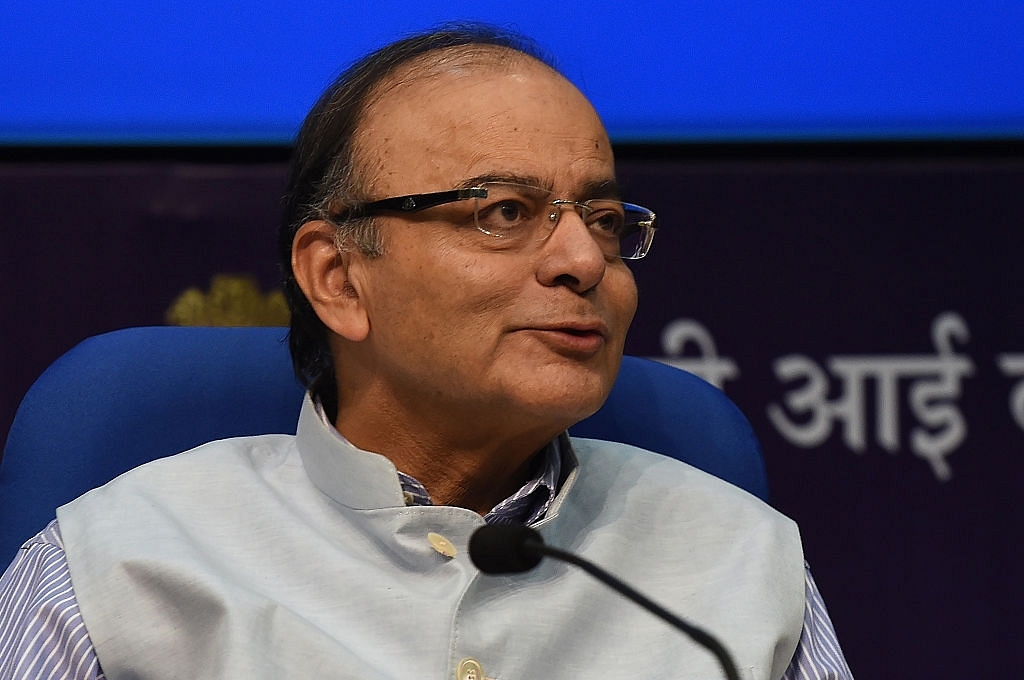Insta
It Was Only A Matter Of Time Before The ‘Plan’ And ‘Non-Plan’ Classification Was Junked

Arun Jaitley, Finance Minister of India (PRAKASH SINGH/AFP/Getty Images)
The Government of India always classified its expenditure into plan and non-plan expenditures. Non-plan expenditure was what the government spent on salaries, subsidies, loans and interest – the so-called non-productive areas. Plan expenditure, on the other hand, was the money spent on productive purposes, like on the projects of various government departments.
Now, however, the government will no longer use this approach to classify its expenditure. “There will be only one budget. And...distinction between plan and non-plan expenditure will be ended from next year,” said Finance Minister Arun Jaitley today (21 September).
The old distinction between “Plan” and “non-Plan” budgets made no sense after the Planning Commission had been abolished. In a market-based economy, five-year plans are passé, even though it is useful to have a long-term vision for where the investments are needed and where not. The only sensible way to draw up budgets is to distinguish capital expenditure from a consumption (revenue) expenditure. One creates assets, and the other consumes the seedcorn. Consumption budgets are important, for we still need to run the government, but capital budgets are more important for future growth.
This categorisation will enable the government to focus on the real deficits — revenue deficits, and not the fiscal deficit, which is the net amount the government needs to borrow to close the gap between revenues and receipts and expenses. Money borrowed to build infrastructure is different from money paid out as subsidies or salaries, as the former creates opportunities for growth while the latter saps them.
Howsoever important it is to build safety nets for the poor and employ staff to run various government functions, it is even more important to ensure that these services are delivered efficiently. The government’s revenue expenses cannot be financed from borrowings, as they have been for most of the years. No company borrows only to pay its employees; it borrows to create future revenue streams, to invest.
Apart from segregating capital and revenue expenditures, it would also be useful for Jaitley to allocate a specific proportion of revenues for subsidies — and not make them open-ended. A subsidy cap of, say, two percent of GDP, is more than adequate to provide safety nets to the poor.
The red line in the sand should be drawn on revenue deficits, and not the overall fiscal deficit, which could have productivity and growth-enhancing expenditures embedded in them.
This piece borrows from the cover story of the February 2016 issue of Swarajya. You can read the full story here.
Support Swarajya's 50 Ground Reports Project & Sponsor A Story
Every general election Swarajya does a 50 ground reports project.
Aimed only at serious readers and those who appreciate the nuances of political undercurrents, the project provides a sense of India's electoral landscape. As you know, these reports are produced after considerable investment of travel, time and effort on the ground.
This time too we've kicked off the project in style and have covered over 30 constituencies already. If you're someone who appreciates such work and have enjoyed our coverage please consider sponsoring a ground report for just Rs 2999 to Rs 19,999 - it goes a long way in helping us produce more quality reportage.
You can also back this project by becoming a subscriber for as little as Rs 999 - so do click on this links and choose a plan that suits you and back us.
Click below to contribute.
Latest